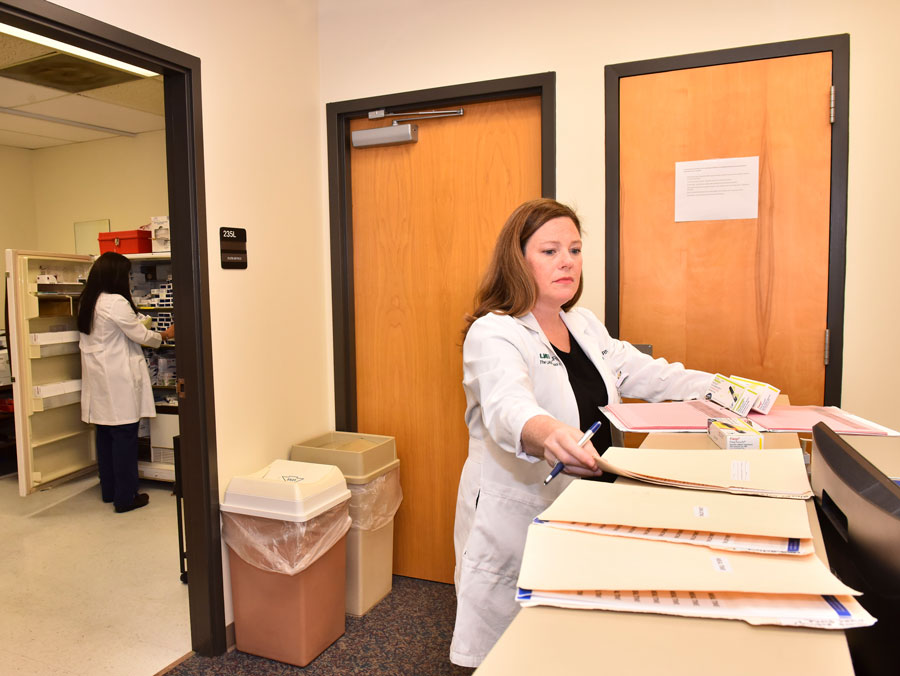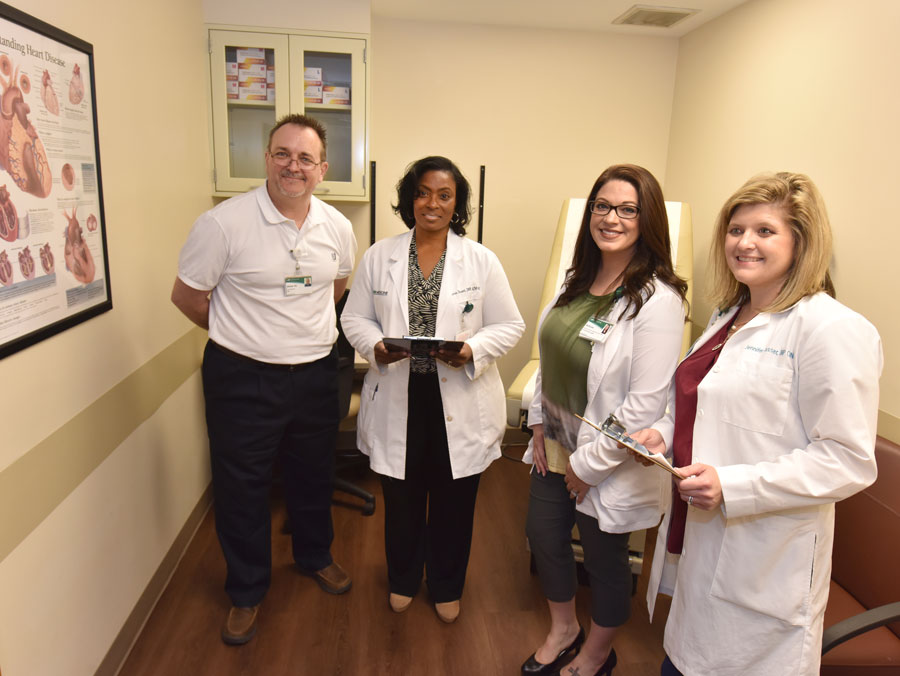 The UAB School of Nursing’s nurse-managed PATH (diabetes) and HRTSA (heart failure) Clinics are expanding behavioral health integration efforts with the support of a new three-year $1.5 million Nurse Education, Practice, Quality and Retention (NEPQR) grant from the Health Resources and Services Administration (HRSA).
The UAB School of Nursing’s nurse-managed PATH (diabetes) and HRTSA (heart failure) Clinics are expanding behavioral health integration efforts with the support of a new three-year $1.5 million Nurse Education, Practice, Quality and Retention (NEPQR) grant from the Health Resources and Services Administration (HRSA).
This is the second behavioral health integration (BHI) HRSA grant for the clinics. This one not only allows for expansion of behavioral health in the clinics; it also provides long-term sustainability of behavioral health integration at the clinics.
“The goal with our first HRSA grant was to improve access to and integrate behavioral health into primary care,” said UAB School of Nursing Associate Professor, Assistant Dean for Clinical and Community Programs, and PATH Clinic Director Michele Talley, PhD, CRNP, ACNP-BC, FAANP, FNAP. “This second grant allows for a different delivery approach for behavioral health care that will help further expand access to care.”
The first grant helped implement a team-based care model to screen patients for depression, anxiety, mood disorders, alcohol use and substance use disorders, among other behavioral health concerns in the primary care setting. It also added behavioral health providers to the primary care team, including a psych-mental health nurse practitioner, social worker, behavioral health care coordinator and psychiatrist.
“In addition to providing care for diabetes, heart failure, and other conditions, we began screening patients for behavioral health needs and teaching primary care providers to engage with behavioral health resources to improve overall quality of care for patients,” Talley said.
 This second grant moves from this “screening, identifying and referring” model to one where primary care providers in the clinics are able to screen, identify and treat behavioral health concerns, while also having the tools to refer out to a psych-mental health nurse practitioner when necessary. While previously, all behavioral health care went through a psych-mental health nurse practitioner, the new grant empowers the primary care provider to provide treatments such as antidepressant prescriptions, and administer care for lower risk patients. For more severe cases, the psych-mental health nurse practitioner will continue to be directly involved in care, but for other cases, they can be consulted through a telehealth role. By consulting and collaborating with the care team in this virtual manner, patient needs can be more efficiently addressed, and care more quickly provided.
This second grant moves from this “screening, identifying and referring” model to one where primary care providers in the clinics are able to screen, identify and treat behavioral health concerns, while also having the tools to refer out to a psych-mental health nurse practitioner when necessary. While previously, all behavioral health care went through a psych-mental health nurse practitioner, the new grant empowers the primary care provider to provide treatments such as antidepressant prescriptions, and administer care for lower risk patients. For more severe cases, the psych-mental health nurse practitioner will continue to be directly involved in care, but for other cases, they can be consulted through a telehealth role. By consulting and collaborating with the care team in this virtual manner, patient needs can be more efficiently addressed, and care more quickly provided.
Through this model, Talley said more medically underserved patients will be able to access the care and treatment needed. Primary care providers also become better equipped to meet patient needs, she added, as they better understand the referral process as well as what can be addressed in a primary care setting.
“We are already treating a vulnerable population, and one that is in high need of many services, but many of our patients also struggle with mental and behavioral health conditions,” she said. “With the continued shortage of healthcare providers for psych-mental health, this project is a way for us to continue to improve access to care and to better equip providers with the tools they need to assist their patients.”
Talley said the grant also allows for the expansion to the model to other clinics.
“We’re looking at other community clinics where we can replicate this model and scale it,” Talley said. “And as we scale up, we will utilize rapid cycle quality improvement to advance the model and process.”
Another goal of the grant is to educate students and provide experience in team-based models of care in order to transform the workforce. Through graduate clinical opportunities at both the PATH and HRTSA Clinics, nurse practitioner students receive experience in integrated, team-based care and a greater understanding of the healthcare needs of vulnerable populations.
“We have the opportunity to provide an environment wherein students can learn to work in an interprofessional team. In addition, we are teaching students how to work within that team on behavioral health and social determinants of health. With a shortage of behavioral health providers, it is important that we teach the next generation of providers how to work in teams and holistically care for patients so that they can go forth and transform health care in their communities,” Talley said.